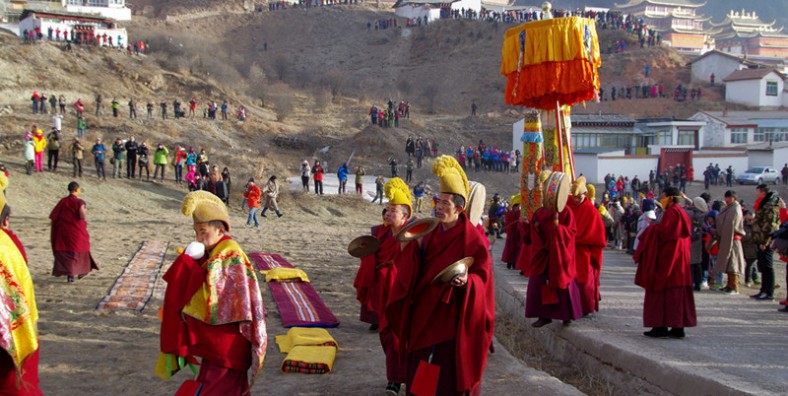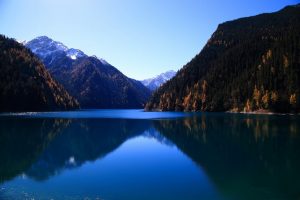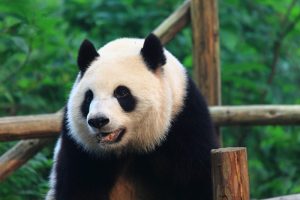
10 Days Gansu-Sichuan Amdo Tibetan Tour from Lanzhou to Chengdu

Tour Overview
This 10 days Gansu-Sichuan Amdo Tibetan Tour from Lanzhou to Chengdu passes eastern edge of Tibetan Amdo, where Tibetans and other multi-ethnic people live together. Thus, its culture centers...
Code of Tour: YCT0000003467
Length of Travel: 10 Day
Destinations of Tour: Lanzhou-Xiahe-Hezuo - Langmusi-Jiuzhaigou-Chengdu
Departure City: Lanzhou
Price of Tour: Request
Type of Tour:
Features of Tour: Panda Culture History Minority Landscape
This 10 days Gansu-Sichuan Amdo Tibetan Tour from Lanzhou to Chengdu passes eastern edge of Tibetan Amdo, where Tibetans and other multi-ethnic people live together. Thus, its culture centers around Tibet as well as other ethnics. You will first pay a visit to Labrang Monastery, the center of politics and religious teaching. Then, visit Jiuzhaigou Valley which is known as “eastern Switzerland”. As the proverb goes, “You won’t want to enjoy the beauty of other mountains after you visited Mount Huangshan, nor will you appreciate the wonder of any other water after returning from Jiuzhaigou valley”, and Jiuzhaigou valley is famous for its waterscape. Lastly, you will visit the Giant Panda Breeding& Research Base, where you can get close to these lovely Pandas. The topography of this route is on the eastern edge of Tibetan Plateau, and you can appreciate various kinds of landscape, including loess plateau, Yellow River, vast prairie, snow-capped mountains, grand canyons, holy lakes, virgin forest and vast plain.
Highlights:
- Experience Tibetan Buddhism in significant monasteries including Labrang Monastery on the way.
- Lose yourself in the beautiful Jiuzhaigou Valley.
- Visit the top attractions of Chengdu – Panda Breeding and Research Center .
- Meet the tranquil lakes, white snow mounatians, shimmering rivers and rare animals along your way.
Brief Itinerary
- Day 1: Lanzhou Arrival
- Day 2: Lanzhou-Xiahe
- Day 3: Xiahe
- Day 4: Xiahe-Hezuo-Langmusi
- Day 5: Langmusi
- Day 6: Langmusi-Jiuzhaigou
- Day 7: Jiuzhaigou
- Day 8: Jiuzhaigou-Chengdu
- Day 9: Chengdu
- Day 10: Chengdu Departure
Google Map
Detailed Itinerary
Day 1 Arrive in Lanzhou by train or plane
Sightseeing and Activities:Lanzhou Arrival
Accommodation:Lanzhou
Meals:None
Lanzhou, the capital of Gansu Province, is an important stop on the ancient Silk Road. After arriving in Lanzhou, you will be transferred to your hotel for a good rest. Stay overnight in Lanzhou.
Day 2 Lanzhou-Xiahe
Sightseeing and Activities:sightseeing on the way
Accommodation:Xiahe
Meals:Breakfast, Lunch
Drive about 6 hours from Lanzhou to Xiahe, with a stop in Linxia for lunch. Along the route, the landscape changes dramatically from the desert, dry mountains around Lanzhou to the green mountains of Xiahe. Stay overnight in Xiahe.
Day 3 Xiahe
Sightseeing and Activities:Labrang Monastery
Accommodation:Xiahe
Meals:Breakfast, Lunch
Visit the Labrang Monastery, the largest Tibetan Monastery outside of Tibet housing about 2000 monks from the Yellow Hat tradition. It is a center of Tibetan learning in Eastern Tibet. There are 6 schools of Buddhist teachings. You will see many monks, often in prayer or busily debating each other on religious issues. All the year around you’ll meet many pilgrims in town wearing their splendid traditional clothing and jewelry. Stay overnight in Xiahe.
Day 4 Xiahe – Hezuo – Langmusi
Sightseeing and Activities:Hezuo Milariba Temple, Langmusi
Accommodation:Langmusi
Meals:Breakfast, Lunch
Drive from Xiahe to Hezuo to visit Hezuo Milariba Temple built in 1777. The monastery is one of the most lamaseries in Amdo Tibetan area and houses 1720 Figures of Buddha, including Jin Gang and four secret Cheng as Bodhisattva.
Then keep forward to Langmusi, a small town in Gansu. We will arrive there in late afternoon. Stay overnight in Langmusi.
Day 5 Langmusi
Sightseeing and Activities:sky burial site, Daceng Lhamo Monastery
Accommodation:Langmasi
Meals:Breakfast, Lunch
Get up early to visit the sky burial site. You might get a chance to see a sky burial ceremony. In Langmusi, the ancient Tibetan custom of sky burials is still practiced. Sky burials are now limited only to a very small area in Tibet and is a rare sight nowadays. The town of Langmusi is situated partly in Gansu province, and partly in Sichuan province, divided only by a small river. Therefore this small town has two monasteries, and one in each province.
We will first visit the sky burial site and go to the Daceng Lhamo Monastery on the Gansu side of the town. In the afternoon, we go hiking through a beautiful gorge where you can see many eagles and vultures soaring above your head. Stay overnight in Langmusi.
Day 6 Langmusi-Jiuzhaigou Tour
Sightseeing and Activities:sightseeing on the way, Jiuzhaigou Tourism Area
Accommodation:Jiuzhaigou
Meals:Breakfast, Lunch
Take a full day travel by car (330km) to Jiuzhaigou via Ruoergai. On the way you will stop several times for some short hiking trips and other scenic stops. We will arrive in Jiuzhaigou in late afternoon. Stay overnight in Jiuzhaigou.
Day 7 Jiuzhaigou day tour
Sightseeing and Activities:Jiuzhaigou Valley
Accommodation:Jiuzhaigou
Meals:Breakfast, Lunch

Enjoy a full day sightseeing in Jiuzhaigou Valley. After breakfast, head to the Jiuzhaigou Scenic Area where you will board on environmentally friendly bus to sightsee of the park.
Jiuzhaigou has three gullies (Shuzhen Gully, Rize Gully, Zezhawa Gully), 118 lakes, 5 beaches, 12 waterfalls, 10 rapids, and decades of springs as well as 12 peaks.
At night, watch a Tibetan folk customs show, consisting of singing, dancing and other programs. Stay overnight in Jiuzhaigou.
Day 8 Jiuzhaigou – Chengdu
Sightseeing and Activities:Dujiangyan Irrigation System
Accommodation:Chengdu
Meals:Breakfast, Lunch
The whole day is to drive from Jiuzhaigou to Chengdu via Songpan.
Visit Dujiangyan Irrigation System en route, one of the world first irrigation systems and ratified into the World Cultural Heritage list. It’s located on the upper reaches of the Minjiang River. It was built between 306-251 BC by the local people under the guidance of Li Bing and his son. Fortunately the Dujiangyan Irrigation System brings the vast Chengdu Plain under irrigation and has protected it against droughts and floods for over 2,300 years. Stay overnight in Chengdu.
Day 9 Chengdu
Sightseeing and Activities:Chengdu Research Base of Giant Panda Breeding, Jinsha Relics Museum, Sichuan Opera
Accommodation:Chnegdu
Meals:Breakfast, Lunch

In the morning, visit Chengdu Research Base of Giant Panda Breeding, 10km from downtown Chengdu. Then, visit Jinsha Relics Museum, exhibiting the splendid culture of the ancient Shu Kingdom 3,000 years ago, modifying previous assumptions about the origins of the Chinese civilization. Over 6,000 pieces of cultural relics with sophisticated craftsmanship, like carved jade, gold, bronze, stone, and ivory artifacts, have been unearthed at the Jinsha Ruins.
As an option in the evening, enjoy wonderful Sichuan Opera. Stay overnight in Chengdu.
Day 10 Depart from Chengdu
Sightseeing and Activities:Depart from Chengdu
Accommodation:None
Meals:Breakfast
Transfer to Chengdu Shuangliu International Airport for your flight to next destination.
Recommended Hotels
| Destination | 5 Star | 4 Star | 3 Star |
| Lanzhou | Gansu Ningwozhuang Hotel | Hampton by Hilton | Apsaras Boutique Hotel |
| Xiahe | / | Tianzhu International Hotel | Ani Gela Hotel |
| Jiuzhaigou | Banyan Tree Jiuzhaigou | Liwan Resort Hotel | Hanlin Sunshine Hotel |
| Chengdu | Crowne Plaza | Tianfu Sunshine Hotel | Garden City Hotel |
Service Included:
-
Tibet travel permit and all other necessary permits to Tibet;
-
All entrance ticket fees for all tourist sites listed in the itinerary;
-
Personal knowledgeable English-speaking Tibetan local tour guide;
-
Personal comfortable, clean and safe vehicle with reliable Tibetan local driver; vehicle ranging from 4WD land cruiser to minibus depending on your group size;
-
All lodging listed in the itinerary; it’s your decision about the accommodation class: luxury 5-star international hotel, comfortable 4-star hotel, economic 3-star hotel or budget hostel, guesthouse or tent. Please tell us your accommodation preference when submitting the enquiry; we will arrange the best-value hotels for you.
-
Domestic flight/train tickets listed in the itinerary;
-
All meals listed in the above itinerary;
-
Tourist accident/casualty insurance;
-
First aid kit;
Service Excluded:
-
International flight to and out of China;
-
Chinese visa (Note: we could help you with the Chinese visa application, like providing the invitation letter, presenting the hotel or domestic flight reservation copies, etc that you may need. )
-
Domestic flight/train not listed in the itinerary. (We can provide you the domestic flight/train ticket booking service at the BEST discount price; please contact us our travel experts for the details.)
-
Meals not specified in the itinerary; usually it costs about USD3-15 per person for one meal in TAR (Tibet Autonomous Region).
-
Tips and gratitude to tour guide and driver;
-
Personal expenses, like laundry, phone call, snacks, soft drinks (please do the best to avoid the alcoholic beverages during your Tibet trip), optional tour activities, etc.
Travel Tips:
- Tibet Permits
There are several permits required to visit Tibet. Tibet Entry Permit, issued by Tibet Tourism Bureau, is the most important one which has to be obtained before your trip because you must have it to take your flight/train to Tibet. To get the permit, you have to book a Tibet tour with us, and send us your passport and Chinese visa about 20 days in advance, and then let us apply for the permit (all Tibet permits can only be applied by travel agency). If you travel to other prefectures like Shigatse, Nyingchi, Shannan, etc, you also have to obtain an Alien Travel Permit. If you travel to Mount Everest, you have to obtain a Border Permit. (Tibet Discovery, with office in Lhasa, has always kept up with the latest news on Tibet Permits. Traveling with us, all your permits are guaranteed as long as you are qualified to the requirements.)
- Available Months to Visit Tibet
Generally speaking, May to early October is the best time to for a Mount Kailash trip. July and August are the peak season and rainy season. It may be too cold to travel in Kailash area from November to March. There is usually heavy snow. The conditions in Namtso Lake and Mount Everest area are quite similar with Kailash. While other places like Lhasa, Gyantse and Shigatse are suitable for travel all year around.
- High Altitude Sickness
The average altitude of Tibet is about 4000 meters above the sea level (Lhasa: 3700m; EBC: 5200m; Namtso: 4718m). You may suffer a bit from High Altitude Sickness in the beginning days of your Tibet trip if you haven’t had rich high plateau travel experience. But don’t worry too much, the high altitude can be acclimatized usually in 2~3 days. Our suggestion is to take a physical examination and get suggestions from your doctor, and also bring some medicines to prevent from High Altitude Sickness before your trip. While in Tibet, you should keep warm all the time, avoid strenuous activities, drink more water and eat more vegetables and carbohydrates. You’d better not take showers during the first two days after your arrival at Tibet. If you don’t feel well, get help from your tour guide or go to the hospital without any delay.
- How to Go to Tibet
Basically you have two options – flight and train. Currently, you can take a flight to Lhasa from Beijing(4.5hrs), Xian(3.7hrs), Chengdu(2.5hrs), Chongqing(3hrs), Kuming(3hrs), etc. Among all these cities, Chengdu and Xian have more frequent flights to Lhasa. Kathmandu also has several flights to Lhasa each week.
If you a train travel, you can take a train to from Beijing(40.5hrs), Xian(32hrs), Chengdu(43hrs), Shanghai(47hrs), Chongqing(42hrs), Lanzhou(25hrs), Xining(22hrs), Guangzhou(54hrs).
- Packing and Wearing Ideas
Firstly you can’t forget your passport and Chinese Visa. A large backpack and a smaller one are recommended (the smaller one can be used for daily activities). Also bring the necessary medicine you need. Other stuffs like sunglasses, snow glasses, hats, lip balm, sun block are recommended. As for wearing, you are suggested to dress in layers (both thin and thick jackets). Down jacket is necessary in Spring and Autumn. A pair of durable and comfortable shoes is necessary.

















